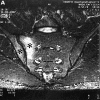Quantitative analyses of sacroiliac biopsies in spondyloarthropathies: T cells and macrophages predominate in early and active sacroiliitis- cellularity correlates with the degree of enhancement detected by magnetic resonance imaging
- PMID: 10666170
- PMCID: PMC1753076
- DOI: 10.1136/ard.59.2.135
Quantitative analyses of sacroiliac biopsies in spondyloarthropathies: T cells and macrophages predominate in early and active sacroiliitis- cellularity correlates with the degree of enhancement detected by magnetic resonance imaging
Abstract
Objective: Sacroiliitis is a hallmark of the spondyloarthropathies (SpA). The degree of inflammation can be quantified by magnetic resonance imaging (MRI). The aim of this study was to further elucidate the pathogenesis of SpA by quantitative cellular analysis of immunostained sacroiliac biopsy specimens and to compare these findings with the degree of enhancement in the sacroiliac joints (SJ) as detected by dynamic MRI.
Methods: The degree of acute sacroiliitis detected by MRI after intravenous administration of gadolinium-DTPA was quantitatively assessed by calculating the enhancement observed in the SJ and chronic changes were graded as described in 32 patients with ankylosing spondylitis (n=18), undifferentiated SpA (n=12) and psoriatic arthritis (n=2). Back pain was graded on a visual analogue scale (VAS, 0-10) and disease duration (DD) was assessed. Shortly after MRI, SJ of patients with VAS > 5 were biopsied guided by computed tomography. Immunohistological examination was performed using the APAAP technique; only whole sections > 3 mm were counted.
Results: By MRI, chronic changes </= grade II were detected in nine patients (group I, DD 2.5 (SD 2.9) years) and > II in 13 patients (group II, DD 7.3 (SD 4.8) years), while enhancement < 70% was found in eight (group A, DD 5.6 (SD 3.3) years) and > 70% in 12 patients (group B, DD 4.7 (SD 5.8) years). The relative percentage of cartilage (78-93%), bone (7-18%) and proliferating connective tissue (1-4%) was comparable between the groups (range). There were more inflammatory cells in group I compared with group II (mean (SD) 26.7(20.1) versus 5.3 (5. 2), p=0.04) and group A compared with B (21.8 (17.3) versus 6.0 (5. 6), p=0.05) cells/10 mm(2)), T cells (10.9 (8.5)) being slightly more frequent than macrophages (9.6 (16.8/10 mm(2))). Clusters of proliferating fibroblasts were seen in three and new vessel formation in seven cases.
Conclusion: This study shows that T cells and macrophages are the most frequent cells in early and active sacroiliitis in SpA. The correlation of cellularity and MRI enhancement provides further evidence for the role of dynamic MRI to detect early sacroiliitis.
Figures













Similar articles
-
Use of dynamic magnetic resonance imaging to detect sacroiliitis in HLA-B27 positive and negative children with juvenile arthritides.J Rheumatol. 1998 Mar;25(3):556-64. J Rheumatol. 1998. PMID: 9517781
-
Anatomic structures involved in early- and late-stage sacroiliitis in spondylarthritis: a detailed analysis by contrast-enhanced magnetic resonance imaging.Arthritis Rheum. 2003 May;48(5):1374-84. doi: 10.1002/art.10934. Arthritis Rheum. 2003. PMID: 12746910
-
The sacroiliac joint in the spondyloarthropathies.Curr Opin Rheumatol. 1996 Jul;8(4):275-87. doi: 10.1097/00002281-199607000-00003. Curr Opin Rheumatol. 1996. PMID: 8864578 Review.
-
Computed tomography guided corticosteroid injection of the sacroiliac joint in patients with spondyloarthropathy with sacroiliitis: clinical outcome and followup by dynamic magnetic resonance imaging.J Rheumatol. 1996 Apr;23(4):659-64. J Rheumatol. 1996. PMID: 8730123
-
Magnetic resonance imaging of sacroiliitis in patients with spondyloarthritis: correlation with anatomy and histology.Rofo. 2014 Mar;186(3):230-7. doi: 10.1055/s-0033-1350411. Epub 2013 Sep 2. Rofo. 2014. PMID: 23999786 Review.
Cited by
-
MRI lesions in SpA: a comparison with noninflammatory back pain using propensity score adjustment method.Ther Adv Musculoskelet Dis. 2022 Aug 25;14:1759720X221119250. doi: 10.1177/1759720X221119250. eCollection 2022. Ther Adv Musculoskelet Dis. 2022. PMID: 36051632 Free PMC article.
-
Imaging in spondyloarthropathies.Curr Rheumatol Rep. 2004 Apr;6(2):102-9. doi: 10.1007/s11926-004-0054-8. Curr Rheumatol Rep. 2004. PMID: 15016340 Review.
-
[Ankylosing spondylitis--current state of imaging including scoring methods].Z Rheumatol. 2006 Dec;65(8):688-99. doi: 10.1007/s00393-006-0122-8. Z Rheumatol. 2006. PMID: 17119899 Review. German.
-
Increased expression of Toll-like receptor 4 in peripheral blood leucocytes and serum levels of some cytokines in patients with ankylosing spondylitis.Clin Exp Immunol. 2007 Jul;149(1):48-55. doi: 10.1111/j.1365-2249.2007.03396.x. Epub 2007 Apr 25. Clin Exp Immunol. 2007. PMID: 17459079 Free PMC article.
-
Histopathology of Psoriatic Arthritis Synovium-A Narrative Review.Front Med (Lausanne). 2022 Jul 1;9:860813. doi: 10.3389/fmed.2022.860813. eCollection 2022. Front Med (Lausanne). 2022. PMID: 35847785 Free PMC article. Review.
References
MeSH terms
LinkOut - more resources
Full Text Sources
Research Materials

